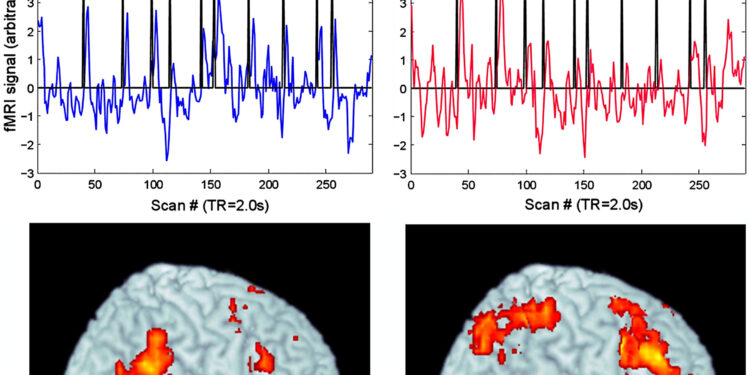An early network (A) comprising the ventrolateral prefrontal cortex (VLPFC) and posterior temporal cortex (PTC) responded to movement boundaries, followed by a network (B) comprising the dorsolateral prefrontal cortex (DLPFC) and posterior parietal cortex (PPC). Reproduced, with permission, from Sridharan et al. Credit: Proceedings of the National Academy of Sciences (2024). DOI: 10.1073/pnas.2319459121
What happens in the brain when one musical phrase ends and another begins? The answer lies in musical boundaries, those invisible lines that shape our listening experience.
Researchers at the University of Jyväskylä in Finland have discovered new insights into how the brain processes musical boundaries (the points in music where one phrase ends and a new one begins) while exploring whether being a musician makes a difference.
The study, led by postdoctoral researcher Iballa Burunat in collaboration with professors Daniel Levitin and Petri Toiviainen (who are both coincidentally neuroscientists and musicians) was published in Proceedings of the National Academy of SciencesBy analyzing the fMRI responses of musicians and non-musicians listening to music, they found significant differences in brain activity at musical boundaries.
Just as we naturally break down spoken language into sentences to extract meaning, humans also identify and process musical boundaries to make sense of musical compositions. The ability to detect and process these boundaries is essential to forming a coherent understanding of music and deriving enjoyment from it, while also improving our ability to remember it.
“Without discernible segments, the music would lack a sense of form, sounding like an endless, chaotic stream of sound, similar to reading a text without punctuation or pauses between sentences, making it difficult to follow the narrative,” says Dr. Burunat.
Boundary perception is actually a skill that goes beyond music: it affects how we perceive and interpret various aspects of our daily lives, such as understanding speech, managing social interactions, and following complex instructions—all tasks that involve breaking information down into smaller chunks in order to understand it. Music is no exception.
“When we listen to music, our brain is constantly identifying patterns and anticipating what comes next. So being able to process musical boundaries helps us understand the structure and meaning of music,” Burunat says.
The study is also significant in its approach to studying these phrasal transitions: using a real-life approach, trying to simulate real-world conditions as closely as possible, while having participants listen to real music from different genres, and without having to self-assess during the listening experience.
“Our study identified distinct brain activity patterns around musical boundaries. As a transition approaches, posterior auditory areas prepare for the change. During and afterward, brain activity shifts to mid- and anterior auditory regions to process the new information, with notable deactivation of frontal regions,” Burunat explains.
“This dynamic processing is akin to how we parse sentences in language; just like language processing, musical sentences activate common neural substrates involved in syntactic processing and rule detection.
“We also observed that musicians and non-musicians use these two networks in subtly different ways. Musicians rely primarily on specialized circuits for auditory processing, while non-musicians use a broader, more general network to navigate musical boundaries. This highlights the remarkable adaptability of the human brain in how expertise can shape and refine how we process sounds.”
This research advances our understanding of how the brain makes sense of music, highlighting the role of expertise in refining neural processing, while opening avenues to explore potential music-based therapies for language comprehension.
More information:
Iballa Burunat et al., Breaking (musical) boundaries by studying the brain dynamics of event segmentation during real-life music listening, Proceedings of the National Academy of Sciences (2024). DOI: 10.1073/pnas.2319459121
Provided by the University of Jyväskylä
Quote:Attuning to Transitions: How Our Brains Cross Musical Boundaries (2024, August 27) retrieved August 27, 2024 from
This document is subject to copyright. Apart from any fair dealing for the purpose of private study or research, no part may be reproduced without written permission. The content is provided for informational purposes only.



